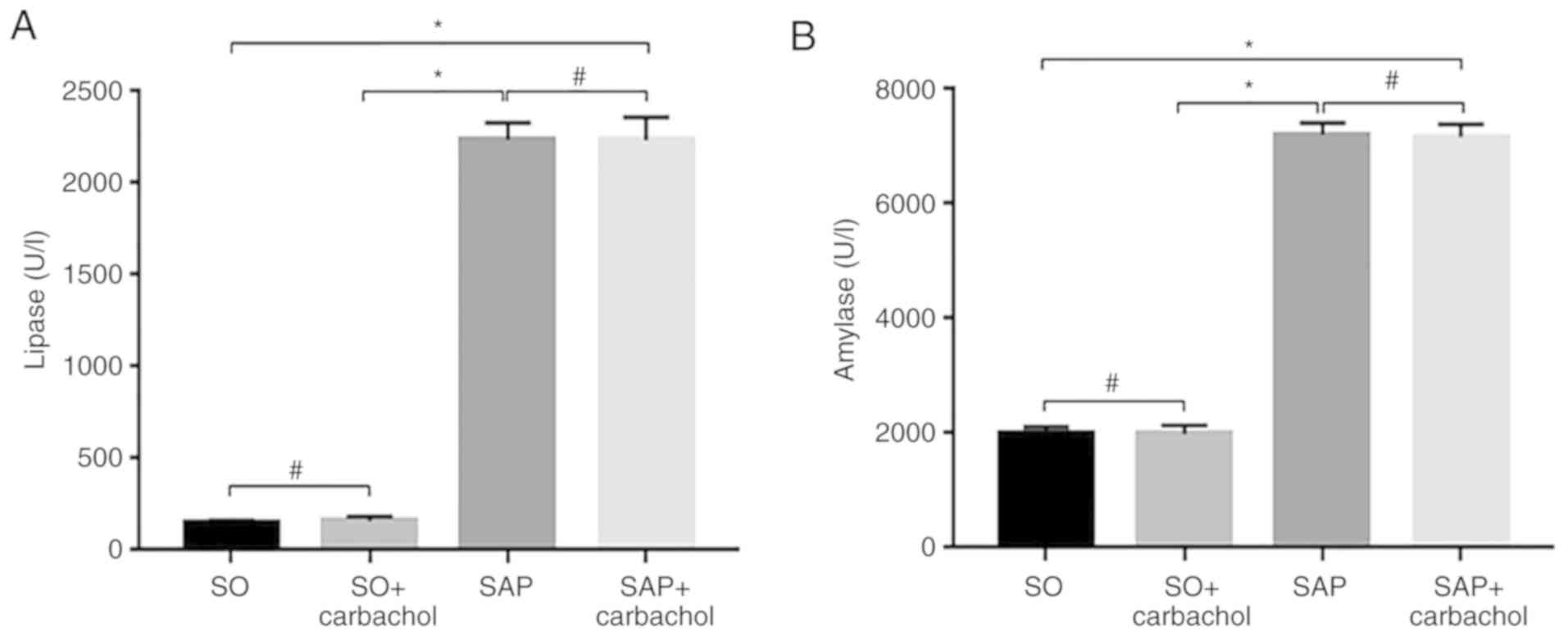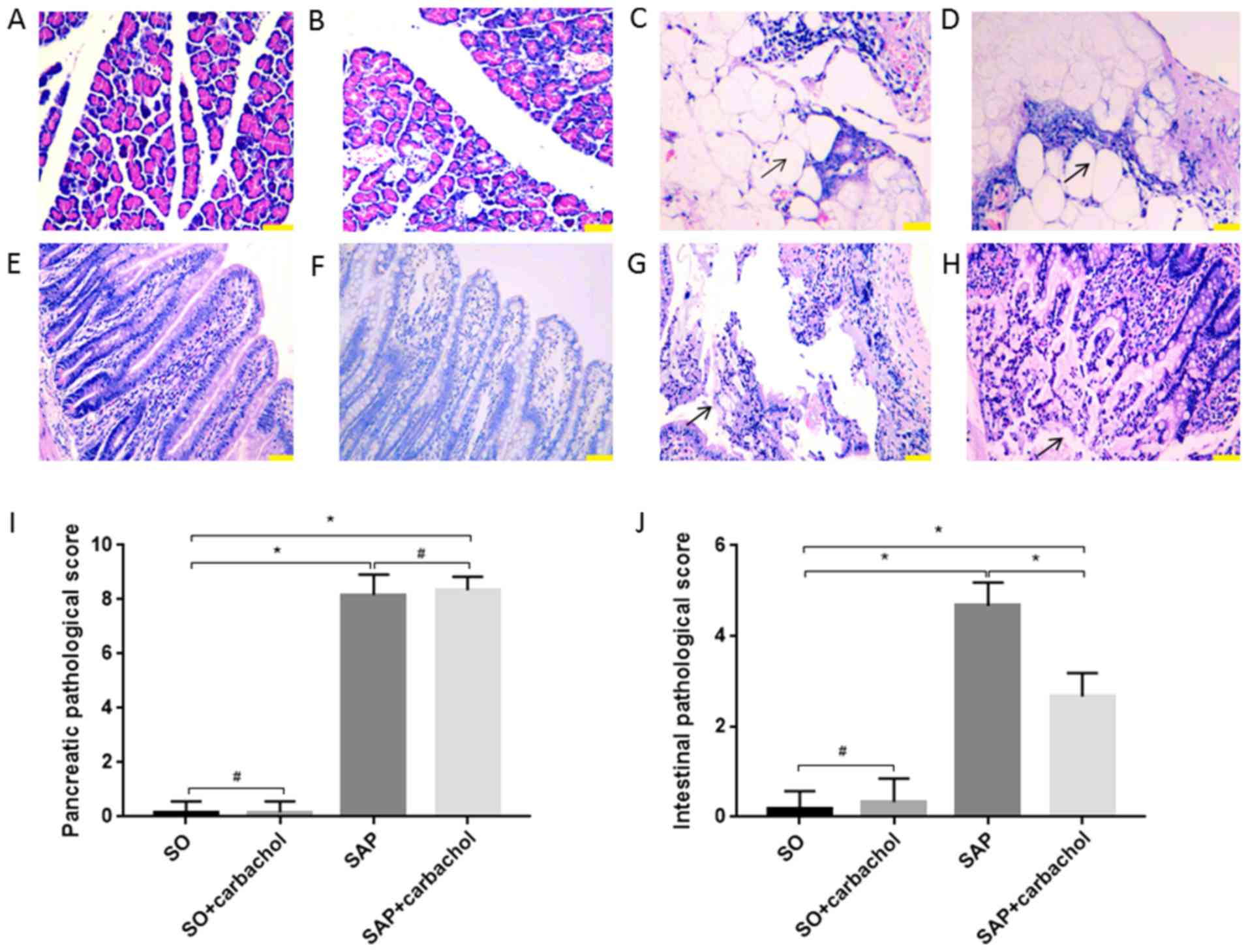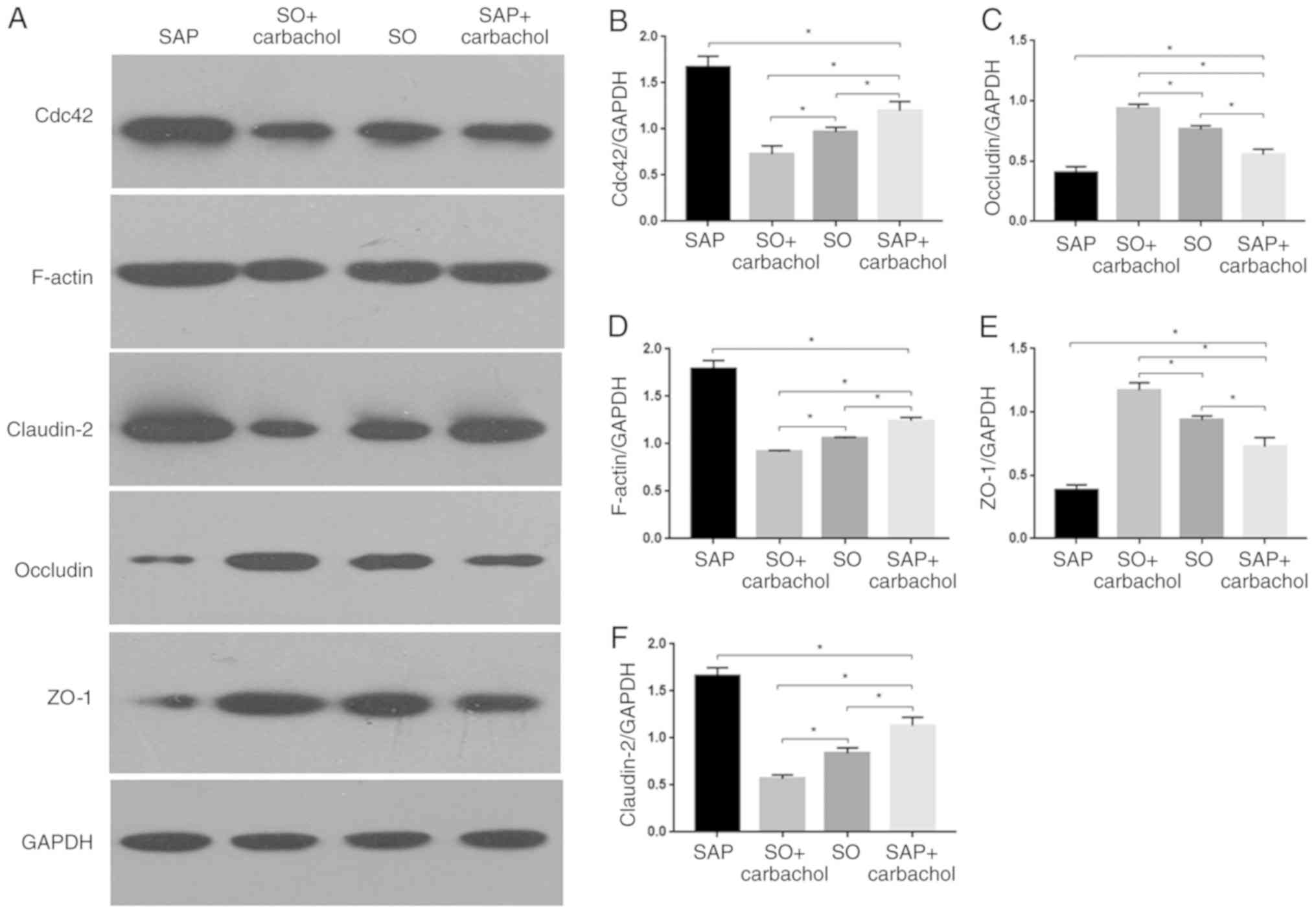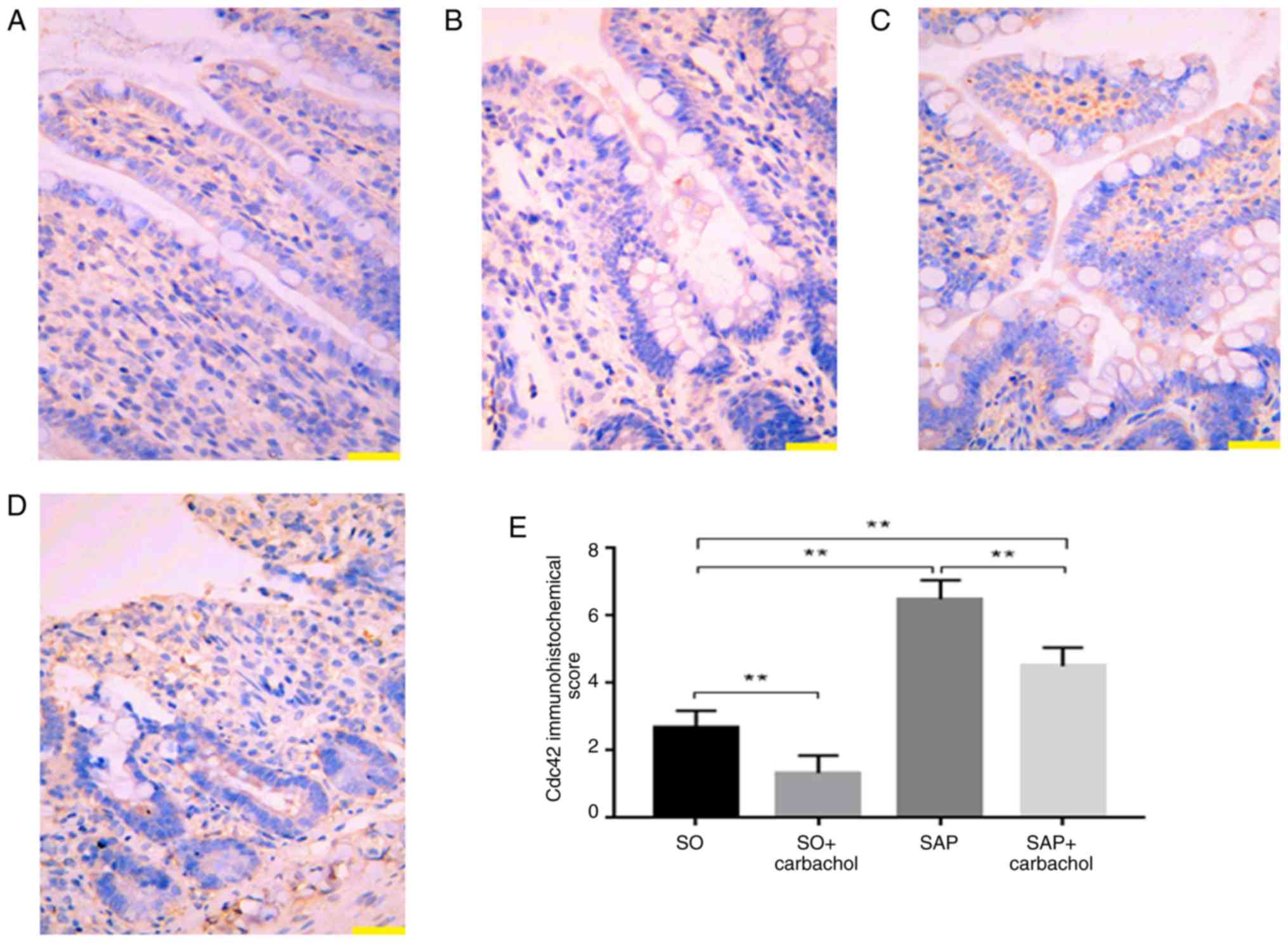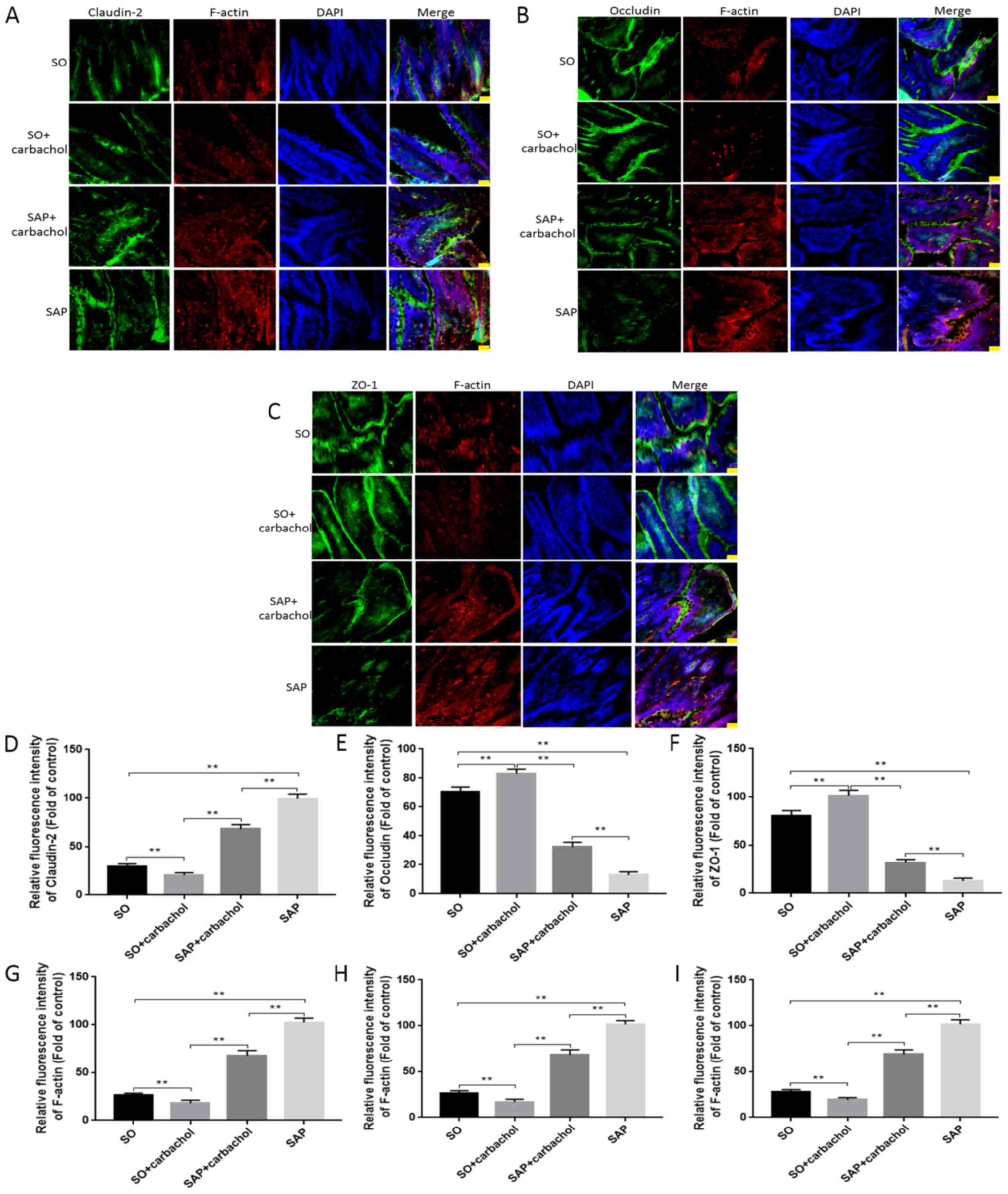|
1
|
Leppäniemi A, Tolonen M, Tarasconi A,
Segovia-Lohse H, Gamberini E, Kirkpatrick AW, Ball CG, Parry N,
Sartelli M, Wolbrink D, et al: 2019 WSES guidelines for the
management of severe acute pancreatitis. World J Emerg Surg.
14(27)2019.PubMed/NCBI View Article : Google Scholar
|
|
2
|
Banks PA and Freeman ML: Practice
parameters committee of the American college of gastroenterology.
Practice guidelines in acute pancreatitis. Am J Gastroenterol.
101:2379–2400. 2006.PubMed/NCBI View Article : Google Scholar
|
|
3
|
van Dijk SM, Hallensleben NDL, van
Santvoort HC, Fockens P, van Goor H, Bruno MJ and Besselink MG:
Dutch Pancreatitis Study Group. Acute pancreatitis: Recent advances
through randomised trials. Gut. 66:2024–2032. 2017.PubMed/NCBI View Article : Google Scholar
|
|
4
|
Uhl W, Warshaw A, Imrie C, Bassi C, McKay
CJ, Lankisch PG, Carter R, Magno ED, Banks PA, Whitcomb DC, et al:
IAP guidelines for the surgical management of acute pancreatitis.
Pancreatology. 2:565–573. 2002.PubMed/NCBI View Article : Google Scholar
|
|
5
|
Berger HG, Rau B, Mayer J and Pralle U:
Natural course of acute pancreatitis. World J Surg. 21:130–135.
1997.PubMed/NCBI View Article : Google Scholar
|
|
6
|
Bradley EL III: A fifteen year experience
with open drainage for infected pancreatic necrosis. Surg Gynecol
Obstet. 177:215–222. 1993.PubMed/NCBI
|
|
7
|
Mier J, León EL, Castillo A, Robledo F and
Blanco R: Early versus late necrosectomy in severe necrotizing
pancreatitis. Am J Surg. 173:71–75. 1997.PubMed/NCBI View Article : Google Scholar
|
|
8
|
Nieuwenhuijs VB, Besselink MG, van Minnen
LP and Gooszen HG: Surgical management of acute necrotizing
pancreatitis: A 13-year experience and a systematic review. Scand J
Gastroenterol. Suppl:111–116. 2003.PubMed/NCBI View Article : Google Scholar
|
|
9
|
Werner J, Feuerbach S, Uhl W and Büchler
MW: Management of acute pancreatitis: From surgery to
interventional intensive care. Gut. 54:426–436. 2005.PubMed/NCBI View Article : Google Scholar
|
|
10
|
Rau B, Bothe A and Beger HG: Surgical
treatment of necrotizing pancreatitis by necrosectomy and closed
lavage: Changing patient characteristics and outcome in a 19-year,
single-center series. Surgery. 138:28–39. 2005.PubMed/NCBI View Article : Google Scholar
|
|
11
|
Banks PA, Bollen TL, Dervenis C, Gooszen
HG, Johnson CD, Sarr MG, Tsiotos GG and Vege SS: Acute Pancreatitis
Classification Working Group. Classification of acute
pancreatitis-2012: Revision of the Atlanta classification and
definitions by international consensus. Gut. 62:102–111.
2013.PubMed/NCBI View Article : Google Scholar
|
|
12
|
Fishman JE, Levy G, Alli V, Zheng X, Mole
DJ and Deitch EA: The intestinal mucus layer is a critical
component of the gut barrier that is damaged during acute
pancreatitis. Shock. 42:264–270. 2014.PubMed/NCBI View Article : Google Scholar
|
|
13
|
Barbeiro DF, Koike MK, Coelho AM, Pinheiro
da Silva F and Machado MC: Intestinal barrier dysfunction and
increased COX-2 gene expression in the gut of elderly rats with
acute pancreatitis. Pancreatology. 16:52–56. 2016.PubMed/NCBI View Article : Google Scholar
|
|
14
|
Simsek I, Mas MR, Yasar M, Ozyurt M,
Saglamkaya U, Deveci S, Comert B, Basustaoglu A, Kocabalkan F and
Refik M: Inhibition of inducible nitric oxide synthase reduces
bacterial translocation in a rat model of acute pancreatitis.
Pancreas. 23:296–301. 2001.PubMed/NCBI View Article : Google Scholar
|
|
15
|
Schwarz M, Poch B, Isenmann R, Kriese D,
Rozdzinski E, Beger HG and Gansauge F: Effect of early and late
antibiotic treatment in experimental acute pancreatitis in rats.
Langenbecks Arch Surg. 392:365–370. 2007.PubMed/NCBI View Article : Google Scholar
|
|
16
|
Schmid SW, Uhl W, Friess H, Malfertheiner
P and Büchler MW: The role of infection in acute pancreatitis. Gut.
45:311–316. 1999.PubMed/NCBI View Article : Google Scholar
|
|
17
|
Medich DS, Lee TK, Melhem MF, Rowe MI,
Schraut WH and Lee KK: Pathogenesis of pancreatic sepsis. Am J
Surg. 165:46–52. 1993.PubMed/NCBI View Article : Google Scholar
|
|
18
|
Wang J, Li C, Jiang YJ, Zheng HM, Li DH,
Liang YB, Deng WS and Zhang DL: Effect of ceramide-1-phosphate
transfer protein on intestinal bacterial translocation in severe
acute pancreatitis. Clin Res Hepatol Gas. 41:86–92. 2017.PubMed/NCBI View Article : Google Scholar
|
|
19
|
Deng WS, Zhang J, Ju H, Zheng HM, Wang J,
Wang S and Zhang DL: Arpin contributes to bacterial translocation
and development of severe acute pancreatitis. World J
Gastroenterol. 21:4293–4301. 2015.PubMed/NCBI View Article : Google Scholar
|
|
20
|
Buckley A and Turner JR: Cell biology of
tight junction barrier regulation and mucosal disease. Cold Spring
Harb Perspect Biol. 10(a029314)2018.PubMed/NCBI View Article : Google Scholar
|
|
21
|
Dokladny K, Zuhl MN and Moseley PL:
Intestinal epithelial barrier function and tight junction proteins
with heat and exercise. J Appl Physiol (1985). 120:692–701.
2016.PubMed/NCBI View Article : Google Scholar
|
|
22
|
Anderson JM and Van Itallie CM: Physiology
and function of the tight junction. Cold Spring Harb Perspect Biol.
1(a002584)2009.PubMed/NCBI View Article : Google Scholar
|
|
23
|
Doherty GJ and McMahon HT: ‘Mediation,
modulation, and consequences of membrane-cytoskeleton
interactions’. Annu Rev Biophys. 37:65–95. 2008.PubMed/NCBI View Article : Google Scholar
|
|
24
|
Qadir MI, Parveen A and Ali M: Cdc42: Role
in cancer management. Chem Biol Drug Des. 86:432–439.
2015.PubMed/NCBI View Article : Google Scholar
|
|
25
|
Cao WH, Chai JK, Hu S, Yang H, Sun T, Zou
X and Sheng Z: Influence of carbachol on intestinal dysfunction
after traumatic or burn injury. Zhonghua Shao Shang Za Zhi.
22:168–171. 2006.PubMed/NCBI(In Chinese).
|
|
26
|
Khan MR, Uwada J, Yazawa T, Islam MT, Krug
SM, Fromm M, Karaki S, Suzuki Y, Kuwahara A, Yoshiki H, et al:
Activation of muscarinic cholinoceptor ameliorates tumor necrosis
factor-a-induced barrier dysfunction in intestinal epithelial
cells. FEBS Lett. 589:3640–3647. 2015.PubMed/NCBI View Article : Google Scholar
|
|
27
|
Zhang Y and Li J: Carbachol ameliorates
lipopolysaccharide-induced intestinal epithelial tight junction
damage by down-regulating NF-κβ and myosin light-chain kinase
pathways. Biochem Biophys Res Commun. 428:321–326. 2012.PubMed/NCBI View Article : Google Scholar
|
|
28
|
Xu W, Zhou YF and Xia SH: Octreotide for
primary moderate to severe acute pancreatitis: A meta-analysis.
Hepatogastroenterology. 60:1504–1508. 2013.PubMed/NCBI
|
|
29
|
Li J, Wang R and Tang C: Somatostatin and
octreotide on the treatment of acute pancreatitis-basic and
clinical studies for three decades. Curr Pharm Des. 17:1594–1601.
2011.PubMed/NCBI View Article : Google Scholar
|
|
30
|
Huang L, Jiang Y, Sun Z, Gao Z, Wang J and
Zhang D: Autophagy strengthens intestinal mucosal barrier by
attenuating oxidative stress in severe acute pancreatitis. Dig Dis
Sci. 63:910–919. 2018.PubMed/NCBI View Article : Google Scholar
|
|
31
|
Schmidt J, Rattner DW, Lewandrowski K,
Compton CC, Mandavilli U, Knoefel WT and Warshaw AL: A better model
of acute pancreatitis for evaluating therapy. Ann Surg. 215:44–56.
1992.PubMed/NCBI View Article : Google Scholar
|
|
32
|
Chiu CJ, McArdle AH, Brown R, Scott HJ and
Gurd FN: Intestinal mucosal lesion in low-flow states. I. A
morphological, hemodynamic, and metabolic reappraisal. Arch Surg.
101:478–483. 1970.PubMed/NCBI View Article : Google Scholar
|
|
33
|
Amasheh S, Dullat S, Fromm M, Schulzke JD,
Buhr HJ and Kroesen AJ: Infamed pouch mucosa possesses altered
tight junctions indicating recurrence of infammatory bowel disease.
Int J Colorectal Dis. 24:1149–1156. 2009.PubMed/NCBI View Article : Google Scholar
|
|
34
|
Shi C, Ren L, Sun C, Yu L, Bian X, Zhou X,
Wen Y, Hua D, Zhao S, Luo W, et al: miR-29a/b/c function as
invasion suppressors for gliomas by targeting CDC42 and predict the
prognosis of patients. Br J Cancer. 117:1036–1047. 2017.PubMed/NCBI View Article : Google Scholar
|
|
35
|
Soslow RA, Dannenberg AJ, Rush D, Woerner
BM, Khan KN, Masferrer J and Koki AJ: Cox-2 is expressed in human
pulmonary, colonic, and mammary tumors. Cancer. 89:2637–2645.
2000.PubMed/NCBI View Article : Google Scholar
|
|
36
|
Remmele W and Schicketanz KH:
Immunohistochemical determination of estrogen and progesterone
receptor content in human breast cancer Computer-assisted image
analysis (QIC score) vs. subjective grading (IRS). Pathol Res
Pract. 189:862–866. 1993.PubMed/NCBI View Article : Google Scholar
|
|
37
|
Werge M, Novovic S, Schmidt PN and Gluud
LL: Infection increases mortality in necrotizing pancreatitis: A
systematic review and meta-analysis. Pancreatology. 16:698–707.
2016.PubMed/NCBI View Article : Google Scholar
|
|
38
|
Nagpal K, Minocha VR, Agrawal V and Kapur
S: Evaluation of intestinal mucosal permeability function in
patients with acute pancreatitis. Am J Surg. 192:24–28.
2006.PubMed/NCBI View Article : Google Scholar
|
|
39
|
Ammori BJ, Leeder PC, King RF, Barclay GR,
Martin IG, Larvin M and McMahon MJ: Early increase in intestinal
permeability in patients with severe acute pancreatitis:
Correlation with endotoxemia, organ failure, and mortality. J
Gastrointest Surg. 3:252–262. 1999.PubMed/NCBI View Article : Google Scholar
|
|
40
|
Schmitz H, Barmeyer C, Fromm M, Runkel N,
Foss HD, Bentzel CJ, Riecken EO and Schulzke JD: Altered tight
junction structure contributes to the impaired epithelial barrier
function in ulcerative colitis. Gastroenterology. 116:301–309.
1999.PubMed/NCBI View Article : Google Scholar
|
|
41
|
Ma TY: Intestinal epithelial barrier
dysfunction in Crohn's disease. Proc Soc Exp Biol Med. 214:318–327.
1997.PubMed/NCBI View Article : Google Scholar
|
|
42
|
Jiang Y, Lin J, Zhang D, Yu Z, Li Q, Jiang
J and Li J: Bacterial translocation contributes to cachexia and its
possible pathway in patients with colon cancer. J Clin
Gastroenterol. 48:131–137. 2014.PubMed/NCBI View Article : Google Scholar
|
|
43
|
Paran H, Mayo A, Paran D, Neufeld D,
Shwartz I, Zissin R, Singer P, Kaplan O, Skornik Y and Freund U:
Octreotide treatment in patients with severe acute pancreatitis.
Digest Dis Sci. 45:2247–2251. 2000.PubMed/NCBI View Article : Google Scholar
|
|
44
|
Uhl W, Buchler MW, Malfertheiner P, Beger
HG, Adler G and Gaus W: A randomised, double blind, multicentre
trial of octreotide in moderate to severe acute pancreatitis. Gut.
45:97–104. 1999.PubMed/NCBI View Article : Google Scholar
|
|
45
|
Mckay C, Baxter J and Imrie C: A
randomized, controlled trial of octreotide in the management of
patients with acute pancreatitis. Int J Pancreatol. 21:13–19.
1997.PubMed/NCBI View Article : Google Scholar
|
|
46
|
Bhatia M: Apoptosis versus necrosis in
acute pancreatitis. Am J Physiol Gastrointest Liver Physiol.
286:G189–G196. 2004.PubMed/NCBI View Article : Google Scholar
|
|
47
|
Chen Y, Chong MM, Darwiche R, Thomas HE
and Kay TW: Severe pancreatitis with exocrine destruction and
increased islet neogenesis in mice with suppressor of cytokine
signaling-1 deficiency. Am J Pathol. 165:913–921. 2004.PubMed/NCBI View Article : Google Scholar
|
|
48
|
Feng Y, Wang Y, Wang P, Huang Y and Wang
F: Short-chain fatty acids manifest stimulative and protective
effects on intestinal barrier function through the inhibition of
NLRP3 inflammasome and autophagy. Cell Physiol Biochem. 49:190–205.
2018.PubMed/NCBI View Article : Google Scholar
|
|
49
|
Zhao J, Zhao R, Cheng L, Yang J and Zhu L:
Peroxisome proliferator-activated receptor gamma activation
promotes intestinal barrier function by improving mucus and tight
junctions in a mouse colitis model. Dig Liver Dis. 50:1195–1204.
2018.PubMed/NCBI View Article : Google Scholar
|
|
50
|
Ma L, Rohatgi R and Kirschner MW: The
Arp2/3 complex mediates actin polymerization induced by the small
GTP-binding protein Cdc42. Proc Natl Acad Sci. 95:15362–15367.
1998.PubMed/NCBI View Article : Google Scholar
|
|
51
|
Rohatgi R, Ma L, Miki H, Lopez M,
Kirchhausen T, Takenawa T and Kirschner MW: The interaction between
NWASP and the Arp2/3 complex links Cdc42-dependent signals to actin
assembly. Cell. 97:221–231. 1999.PubMed/NCBI View Article : Google Scholar
|
|
52
|
Hall A: Small GTP-binding proteins and the
regulation of the actin cytoskeleton. Annu Rev Cell Biol. 10:31–54.
1994.PubMed/NCBI View Article : Google Scholar
|
|
53
|
Nobes CD and Hall A: Rho, Rac, and cdc42
GTPases regulate the assembly of multimolecular focal complexes
associated with actin stress fibers, lamellipodia, and filopodia.
Cell. 81:53–62. 1995.PubMed/NCBI View Article : Google Scholar
|
|
54
|
Ren X, Zhu Y, Gamallat Y, Ma S, Chiwala G,
Meyiah A and Xin Y: E. coli O124 K72 alters the intestinal barrier
and the tight junctions proteins of guinea pig intestine. Biomed
Pharmacother. 94:468–473. 2017.PubMed/NCBI View Article : Google Scholar
|















